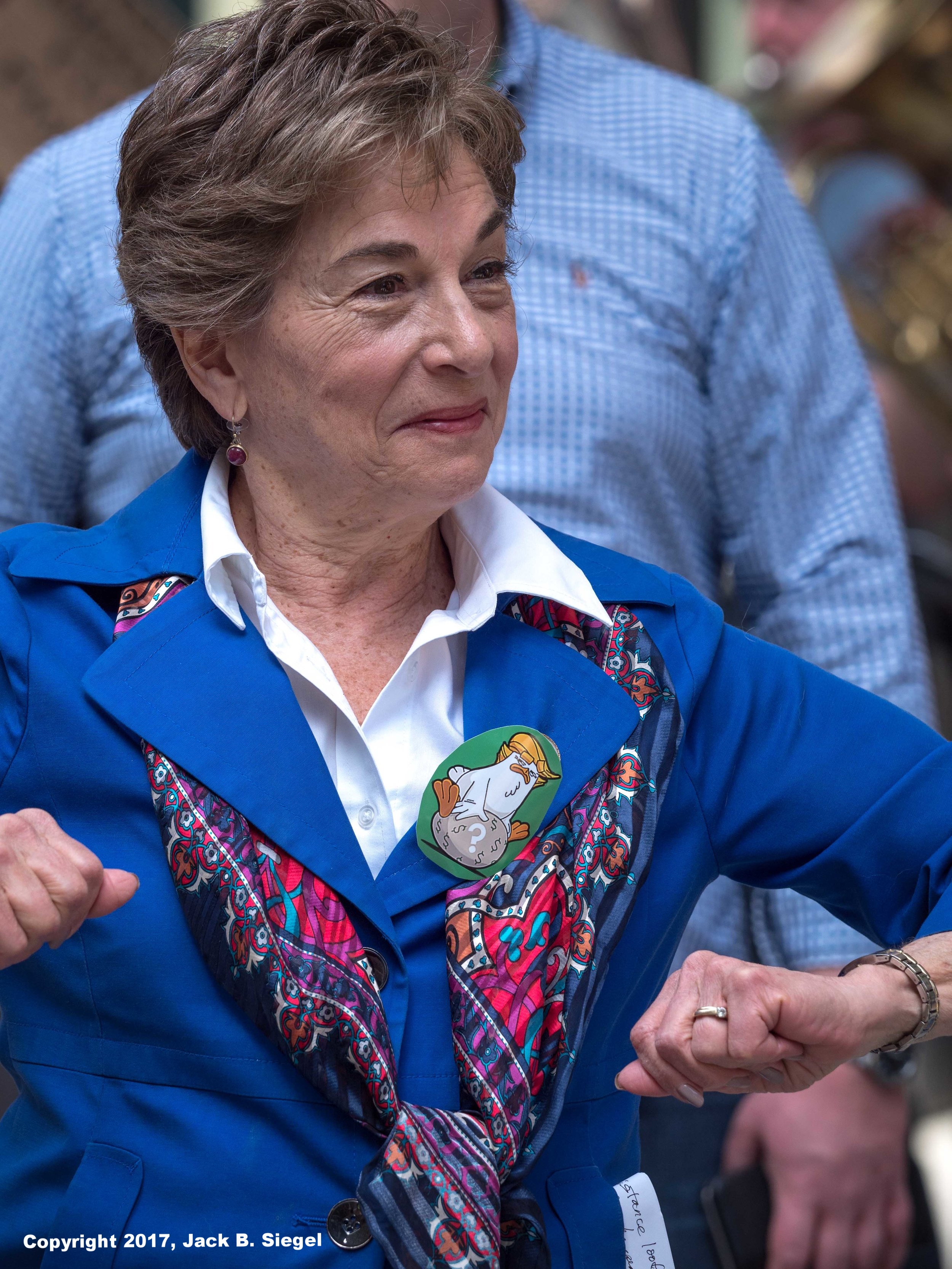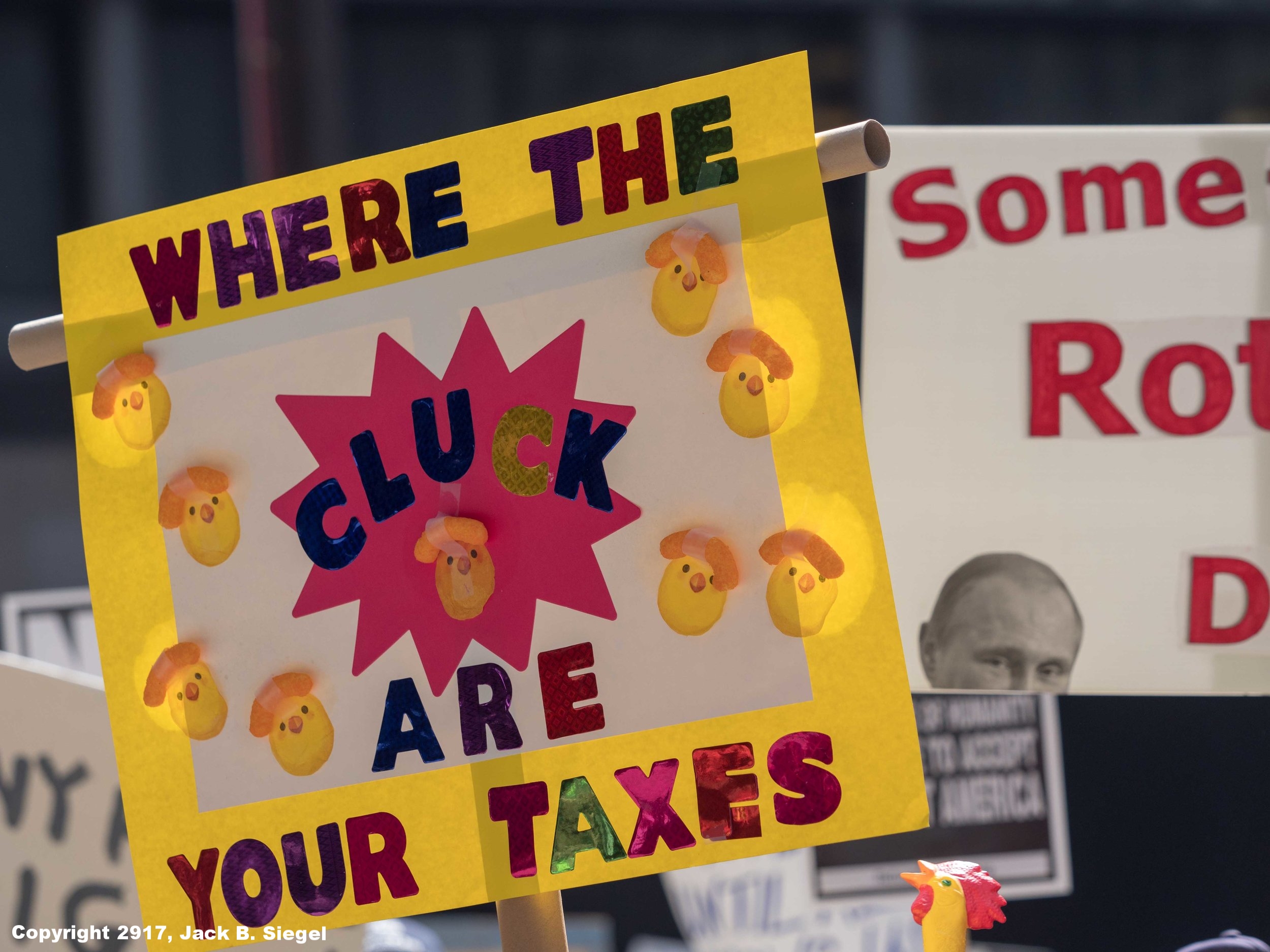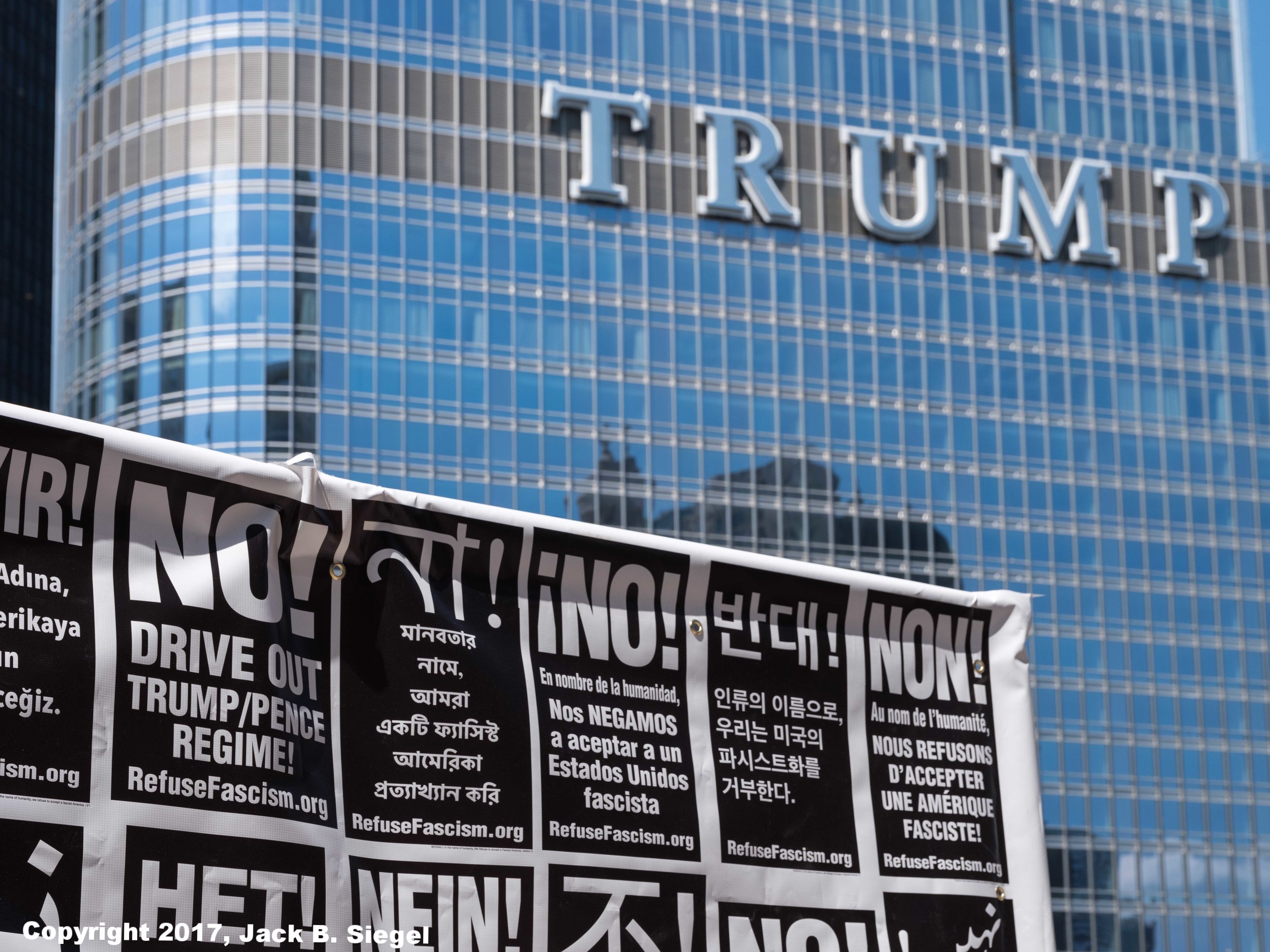6103
Today, people in dozens of cities across the United States protested Donald Trump's failure to release his tax returns, as he had once promised he would do. In Chicago, somewhere between 2,000 and 4,000 people attended the protest that began with speeches in Daley Plaza.
The protest was fairly well focused on Trump's tax returns, but the signage reflected other concerns, such as income inequality, women's reproductive rights, and recent saber rattling by the Trump Administration. Somewhat surprisingly, I saw few, if any references, to Black Lives Matter. Nor was there the large Muslim presence that I saw during the Not-My-President's Day marches in February. There was a small contingent of ultra left-wing Occupy Wall Street types. The drum circle was the tell.
The organizers made one very smart decision. Unlike the Women's March back in January, the organizers limited the speeches to five or six speakers over a 45-minute or so period. In Chicago, the organizers of the Women's March had programmed two dozen or so speakers, with the formal event lasting for somewhere between two and three hours. Way too much yapping, even though many of the speakers were excellent. Editing and proportionality is important.
Today's crowd heard speeches from the Reverend Jesse Jackson, Representative Jan Schakowsky (Congressional Fifth District), Representative Mike Quigley (Congressional Ninth District), Illinois State Senator Daniel Bliss, a preacher who gave a blessing, and Taran Singh Bar, one of the organizers. The speeches were anything but fiery. In fact, Reverend Jackson showed no signs of his usual charisma.
Once the speeches were completed, the crowd quickly moved to Dearborn Street, then headed three blocks north to Wacker Drive, and then marched east two blocks to the intersection of Wabash and Wacker Drive--the focal point of all Trump marches because it is in the shadow of Trump Tower. As has become the norm, a contingent of Chicago police awaited the demonstrators at the intersection, with bicycle racks and a horse brigade blocking passage of over the Wabash Bridge, which is the Police Department's way of protecting Trump Tower on the north side of the Chicago River. Wacker Drive had bicycle racks running along the median strip, which effectively penned the demonstrators in. Also present were the ubiquitous cops on bikes, who use the bikes to block intersections. It should be noted that the police were not riding the ugly Divy bikes used for Chicago's bike share program. The cops were using some very nice mountain bikes, which must have cost taxpayers a pretty penny.
Both the police and demonstrators were in a good mood, with the air free of any threats of violence. For the cops, these demonstrations are a respite from their more taxing duties, providing members of the force an opportunity to catch up on family news and department gossip.
Organizers need to get smart about visuals. The gray rickety stage was huge, with a lone speaker typically occupying the entire stage by him or herself. Either use a smaller stage, or fill it with dignitaries and organizers in chairs behind the speaker. As it was, the each speaker looked "small." And then there was the section for people with disabilities, which was a large semi-circle in front of the stage. I certainly have no problem with setting space aside, but their were very few people in this section, which meant that visually there was a lot of empty space. From an image standpoint, which is what these demonstrations are all about, the empty space significantly undercuts the message. In the future, organizers need to figure out how to appropriately accommodate people with disabilities while maximizing the event's visual impact. In this case, the organizers should have told the crowd to move forward when it was readily apparent that much of the space set aside would remain empty. To make way for the crowd, the television cameras should have been placed on a raised platform toward the back, once again to ensure better visuals with demonstrators pushed up against the stage.
The tuba choir is always a nice touch, but the organizers need to find some entertainers of note. Piping Beatles songs over the PA, including George Harrison's Taxman, generates no excitement.
I continue to hold the view that these marches make the attendees feel good, but the numbers are not high enough to make a difference, and may even be counterproductive. The January Women's March set the standard. Unless Chicago and other cities can put 250,000+ people on the street, the effort is largely pointless. It is hard to imagine that Trump noticed any of the demonstrations, particularly if he was golfing at one of his Florida resorts, which he seems to regularly do on weekends. In the case of the Chicago event, there were two or three large video cameras in the area reserved for press, but I did not see any of the three major local station logos on those cameras, as is usually the case. Toward the end of the speeches, the cameras had already been taken down from the tripods. Given the low turnout out of major media outlets, I was not surprised that the media did not give extensive coverage to the event.
As for the crowd's enthusiasm, it was pretty lackluster. Not a lot of call and response between the speakers and audience. The event kicked off at around 11:15AM. By 1:30PM, large parts of the crowd that had assembled on Wacker had drifted away. As I have said before, if these events are to be effective, the organizers need to employ more inventive street theatre.
In a note to Congressman Quigley, next time a constituent introduces himself, and tells you that he has enjoyed your frequent appearances on MSNBC, don't look down at the messages on your iPhone, and walk away, particularly after you initiated the exchange by extending your hand. Then again, I guess Quigley is like United Airlines. No competition, so no need to concern himself with constituent relations.
By the way, it looks like Jesse Jackson Junior's recent troubles have taken a toll on his father. Reverend Jackson has largely lost his charismatic fiery nature.
A note to my photographer friends: I used the new Fuji GFX 50s medium format camera to capture many of the following images, together with my Olympus OM-D-E-M1, Mark II and Leica M cameras. All of the color photographs were captured with the Fuji, except the photographs captioned Daley Plaza, Congresswoman Jan, and Peeps for Easter.
I did not purchase the Fuji for street, event, or sports photography because there are better tools for capturing those images. I nevertheless decided to bring the Fuji just to see what would happen. I was stunned with its excellent performance. As expected, the autofocus system was slow, but it only proved problematic when I tried to obtain closeups while walking against the marchers. Interestingly, processing the photographs in Adobe Camera Raw was an entirely new experience; one that will take some getting used to. Normally, I knock back the highlights, open the shadows and whites, and lower the blacks when processing photographs. With the Fuji, the need for adjustments was significantly reduced, the adjustments, even when pushed, had far less impact on the image, and I found myself reversing the direction of the sliders from my normal practice. I suspect that all of this is due to expanded dynamic range and the more gradual roll off in luminance transitions.
Medium format can be problematic given the shallower depth of field, which meant the sunny day worked in my favor. Stopping down the aperture to compensate for the lower of depth of field poses a problem when the scene is poorly lit because that means shutter speed has to be slower or ISO increased, which raises issues involving camera shake and undesirable noise.
It is never apparent with the low resolution jpg images displayed on websites, but at 100% view, the detail in the files is quite amazing. Every pore is visible, together with all the blemishes. No negative clarity adjustments here.


































